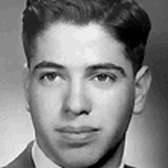
Pete grew up in Essen, a major industrial city on Germany’s Ruhr River. His father worked as a cattle hide dealer for an international trading company in nearby Mühlheim. His mother was a designer for a fashionable women’s dress shop. Pete, his younger twin brothers, and parents lived together in an apartment.
1933–39: Pete had barely passed his first birthday when the Nazis came to power. His father realized the danger that now faced Jews in Germany, and the family left for Prague, Czechoslovakia in 1936. Pete attended Jewish school there, but the times were unsettling. In fall 1938, the Sudetenland, a region of Czechoslovakia, was incorporated into the Nazi Reich, and the following March, German troops marched into Prague. Shortly thereafter, Pete’s family left for Italy, where they settled in the Genoa suburbs. There, they were attacked by local antisemitic fascists. Soon after Germany invaded Poland in September 1939, the Philippses immigrated to Ecuador.
1940–45: In Quito, the Philippses joined the growing colony of refugees from Germany. Pete attended a private boys’ school. His father set up business making margarine, while his mother did clothing alterations and knitting. In May 1941, just six months before the Japanese attack on Pearl Harbor, the Philippses arrived in the United States. Pete’s father returned to his former company.
After the war, Pete learned that his paternal grandmother, who had fled earlier to the Netherlands, had been deported to Auschwitz, where she perished. He completed his education and, after a tour of military duty in Germany, became a journalist for the New York Times.
